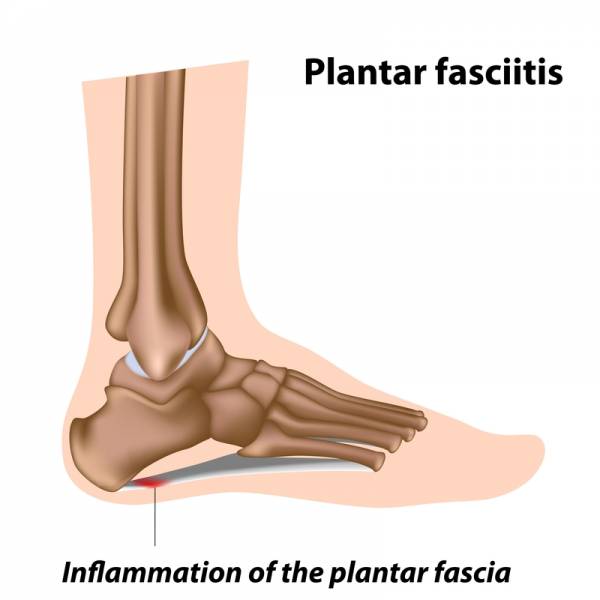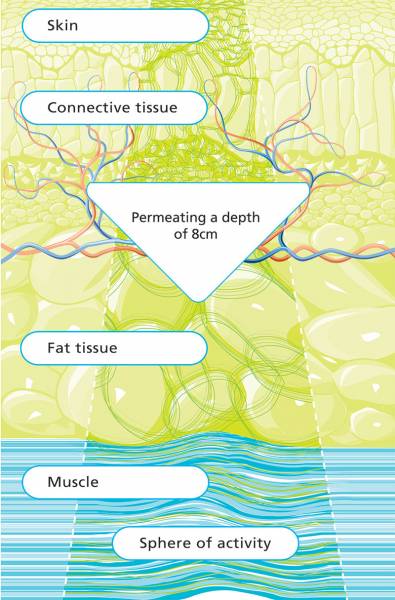Report On The Treatment Method DEEP OSCILLATION® In The Diagnosis of Plantar Fasciitis
Background: Two patients with the diagnosis of Plantar Fasciitis visited the practice in Switzerland for a repeated series of treatments in physiotherapy. (3 x 9 PT sessions)
.jpg)
Report from Clinician: Dipl. Physiotherapist Alexander Weiss
Location: Practice for physiotherapy in CH-8906 Bonstetten, Switzerland
Background: Two patients with the diagnosis of Plantar Fasciitis visited the practice for a repeated series of treatments in physiotherapy. (3 x 9 PT sessions)
Therapeutical setting (1st and 2nd series of the PT prescription):
- Shockwave Therapy (radial shockwave)
- Laser Therapy
- Stretching Exercises
- Ultrasound Treatment - alternative to shockwave
Frequency: 2 x weekly treatment
Result:
Slight/minor pain relief and improvement of the general complaints, but overall for the two patients being a very unsatisfied result
Therapeutic setting (3rd and Last of the PT prescription):
- Treatment with DEEP OSCILLATION® (DO) and Low level Laser Therapy (LLLT), in addition patients did more stretching exercises at home daily.
- DO Parameters : 25 minutes total with applicator Ø 5cm, 5 min 100Hz, 10 min 80 Hz, 20 Hz for 10 min, 5 min 100Hz on the clearly described pain area
- LT Parameters: Laser shower on pain region, Dose: 6 joules, continuous light, 785 nm, 14 laser diodes
Result following 9 treatments:
In comparison to the first two interventions (see above) a much higher and more significant improvement in pain symptoms and also a good improvement in the general symptoms. The intervention was always described as very pleasant and tolerable, one patient even described that their initial morning complaints are almost over and she had a good feeling while running. The result as stated by both patients was a good and very acceptable treatment outcome. Patients feedback on the experienced therapy and the results from it were very positive and motivating for both patients
Observations from Alexander Weiss
After an initially difficult position with unsatisfactory 1st and 2nd PT treatment, the results I then achieved in subsequent sessions with DO (a very gentle therapy) mean that I am further encouraged to use this method on patients diagnosed with Plantar Fasciitis. Further detailed reports are required from other users working on this indication with DEEP OSCILLATION® and maybe more extensive studies on a larger scale which state more specifically how exactly this method can be used in treatment of this diagnosis. However, I personally am absolutely convinced that DEEP OSCILLATION® has shown once again that there are almost no limits in its application. We always have very high patient satisfaction and often very good results after therapy. So regardless of whether the actual principle of what is happening in the tissue can yet be explained, I personally find no reason as to why should I not apply such a good, safe and gentle therapy method to my patients because the results are so satisfying. For me it is always the results that count as a decisive factor in whether I use a method of treatment or not. I look forward to the future positive feedback and results of my patients with the therapy method DEEP OSCILLATION®.

Plantar fasciitis means inflammation of the plantar fascia. The plantar fascia is a strong band of tissue (like a ligament) that stretches from the heel to the middle foot bones. It supports the arch of the foot and also acts as a shock-absorber in the foot.
DEEP OSCILLATION® Non-invasive, non-traumatic, electrostatic impulses are delivered through vinyl gloves or applicator heads. Gentle impulses permeate an 8 cm depth through all tissue layers; skin, sub-coetaneous fat, muscles, blood and lymph vessels, with clinically proven effects in the interstitial spaces of the connective tissue.

